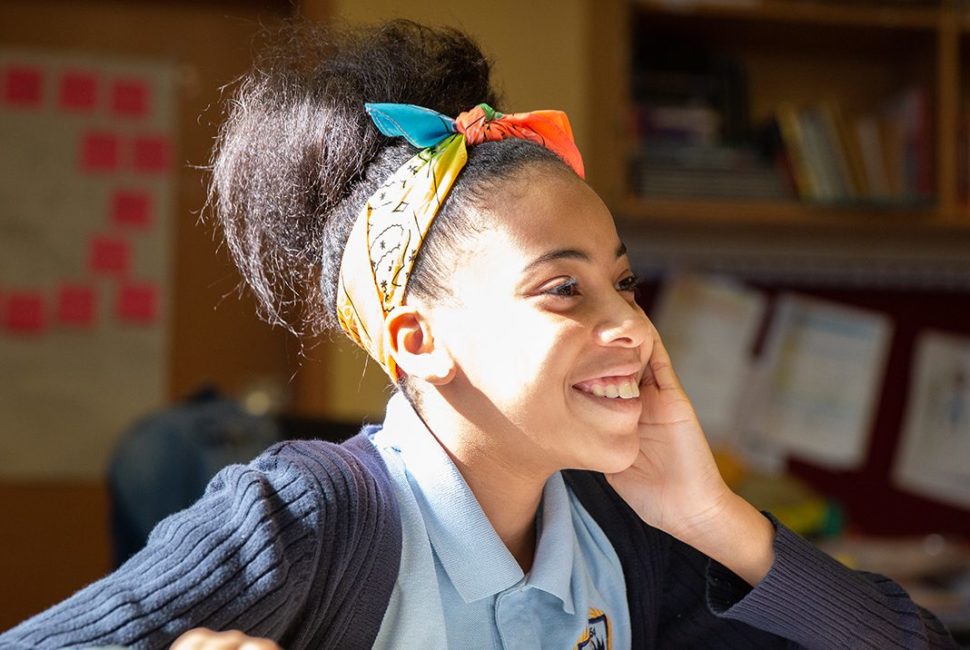How the DOE is Creating Safe, Supportive Learning Spaces for All Our Students

In early January, The Morning Bell joined Chancellor Richard A. Carranza on a visit to Brooklyn Academy of Global Finance in Bedford-Stuyvesant to observe teacher Catherine Devine and her tenth graders engaged in a restorative circle.
This activity looks just the way it sounds. Students sit in a circle and talk as a way to build relationships, respond to conflicts, and understand how their actions affect others. Creating safe spaces for students to express their feelings and solve problems together is an important way to keep them in the classroom and focused on learning.
Ms. Devine, a math teacher, began the exercise with a check-in. “How is your week going?” she asked, and responded that hers had been good, but busy.
Not all of her students were quite as upbeat, with responses ranging from “good” to “bad,” to “very peaceful” and “very tiring.”
Following this exercise, the teacher passed around pieces of paper with some of the personal struggles that students had written down, and encouraged the group to try to resolve them together. One student described the stress she felt about all the violence in the world. Classmates suggested taking a break from the news, listening to music, or reaching out for help by talking to the school counselor.
These conversations were reminders that when students enter City schools every morning, teachers may not know what happened to them that day or the week before. Maybe a student’s father lost his job. Maybe a grandparent passed away. Maybe a child had an argument with a friend or simply didn’t get enough sleep.
School communities like Brooklyn Academy of Global Finance, and across the nation, have experienced the power of these practices. According to studies, students who have social-emotional skills display more understanding, have stronger relationships with their classmates, communicate better with their teachers, and show improved academic performance. And these skills follow them throughout their lives.
Thanks in part to our restorative justice efforts, New York City’s public schools are safer, and students are spending more time in the classroom. Suspensions have fallen roughly 39 percent in the past five years. Brooklyn Academy of Global Finance Principal Danielle Darbee, who began implementing restorative practices in the 2018–19 school year, noted a 63 percent decrease in suspensions over the previous school year. All her teachers now lead restorative circles.
Encouraged by these outcomes and the research, the DOE is expanding social-emotional learning and restorative justice practices citywide. So far, more than 240 elementary schools have participated in training on social-emotional learning through our partner, Sanford Harmony, and 500 middle-and high- schools are part of our ongoing restorative justice training and support.
These are not “soft” skills, notes Chancellor Carranza. Nor do they come at the expense of academics.” Instructional time is lost if students are suspended from school, or if they are not actively engaged in academic studies,” he says. “Learning opportunities are lost if students are worried about what happens outside of the classroom. And they are lost if the body is there, but the mind is not.”
Helping every student gain the social and emotional skills they need to stay focused at school is imperative for their learning, and for coping with life’s challenges that lie ahead.

